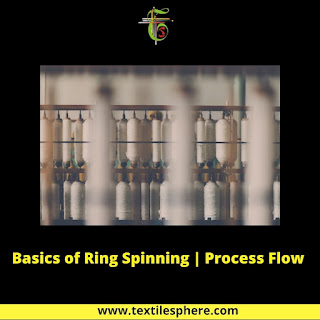Mixing & Blending
Mixing or Blending is done according to the end use of the product, and this is done for achieving the properties of the final product.
Mixing is
done for achieving the desired quality and property of the final product
Blending is done for reduction of cost of final product since cost of raw material is 70% of the cost of product & the remaining 30% goes into processing of the product , Blending decreasing the raw material cost hence decreasing the cost of final product.
Blowroom
Objective of blowroom :
- Cleaning by opening
- Mixing or blending
- Dust removal
- Lap formation
Generally cleaning efficiency of blowroom in 70-75%
The modern cotton blowroom line can be divided into 6 distinguished zones.
- Bale opening zone
- Coarse cleaning & opening zone
- Mixing & blending zone
- Fine opening & cleaning zone
- Intense opening & cleaning zone
- Card feed preparation zone
Flowchart of blowroom:
Bale opener
( Uni-floc, blendomat,hopper feeder )
↓
Metal Detector
↓
Coarse Cleaner
( Uni-clean, step cleaner )
Rieter Truetzschler
↓
Mixer
( Uni-
mix, multi mixer )
Rieter Truzetzschler
↓
Fined cleaner
( uni-flex, RN
cleaner )
Rieter Truetzschler
↓
Chute Feed System
Carding
Objectives :
- Fibre individualization
- Removal of trash, impurities
- Removal of neps
- Removal of short fibres
- Fibre mixing/blending
- Sliver formation
Carding implies intensive opening
& cleaning with point to point wise action. (individualization)
Carding zone is only between flats &cylinder point to point action is present in cylinder & doffer also, but the intensity of opening & cleaning is very less in fact it is given to just transfer the fibres from cylinder to doffer hence its called transfer action.
Carding action completed within
first few flats & then cleaning of feed is done (extraction of neps,short
fibres, trash) in later cards.
- Input - fibre sheet
- Output – carded sliver
Drawframe
Objectives:
- Improvisation in the uniformity of the sliver
- Improvisation of the fiber arrangement in the sliver along with making the fiber parallel to fiber length
- To make the hooked, crimped, and curled fiber straight which are present in the sliver.
- Drafting the sliver and reduction in the linear density.
- Blending of 2 different materials in case of blending requirement.
- Remove impurities like dust from the sliver
Hook removal theory
- Drawframe removes trailing hooks
- Comber removes leading hooks
- Carding generates the majority of trailing hooks
- There must be Even no. of passages (breaker) between carding & comber & Odd no. of passages (finisher) between carding & ringframe.
Input - carded sliver
Output - drawn sliver
Comber
Objective :
- Remove short fibres
- Remove neps & impurities
- Parallelization ( removal of leading hooks)
- Combed sliver has least tenacity of all slivers and carded sliver is the strongest.
- Autoleveller is must in comber, because after combing piecing is done & piecing produces periodic faults due to this autoleveller is used after combing action.
Noil% = wt. of noil / wt. of (noil + combed sliver)* 100
- Input – lap sheet
- Output – comb sliver
Speedframe
Objective :
- Drafting
- Twisting
- Formation of roving
- winding
Draft of 5-20 theoretical draft but practically only 10-15 is given or obtained
Aprons are used in drafting
roller arrangement they help to support the floating fibres and reduces the
possibility of formation of drafting wave.
The length of apron is kept
approx.. to the staple length of fibre & is called as cradle length.
In speedframe, false twist is
given between front roller and flyer top it is generally ranges from 0.7-2 TPI
- Input – finished sliver
- Output – roving
Ringframe
Objective :
- Attenuation of roving to achieve the desired count.
- Impart twist into the strand to improve the tenacity
- Winding of the twisted strand i.e yarn on a suitable package i.e bobbin.
Roving bobbins are placed on the creel and the roving the further taken ahead from the guide directly into the drafting system where the strand is drafted as per the count to be achieved.
The next step involves imparting the twist with the combination of ring and traveller and at the last the twisted strand is wound onto the bobbin with help of the ring rail up and down motion







1 Comments
Very helpful information! Many people aren't aware about the detailed process of yarn manufacturing and this article is the perfect guide to start. It would be more helpful if you could write an article discussing the issues that may arise in various spinning stages and how to resolve them. We are also a part of the textile industry manufacturing and supplying spinning cans, which are very essential in the spinning processes. Looking forward to more such articles!
ReplyDelete